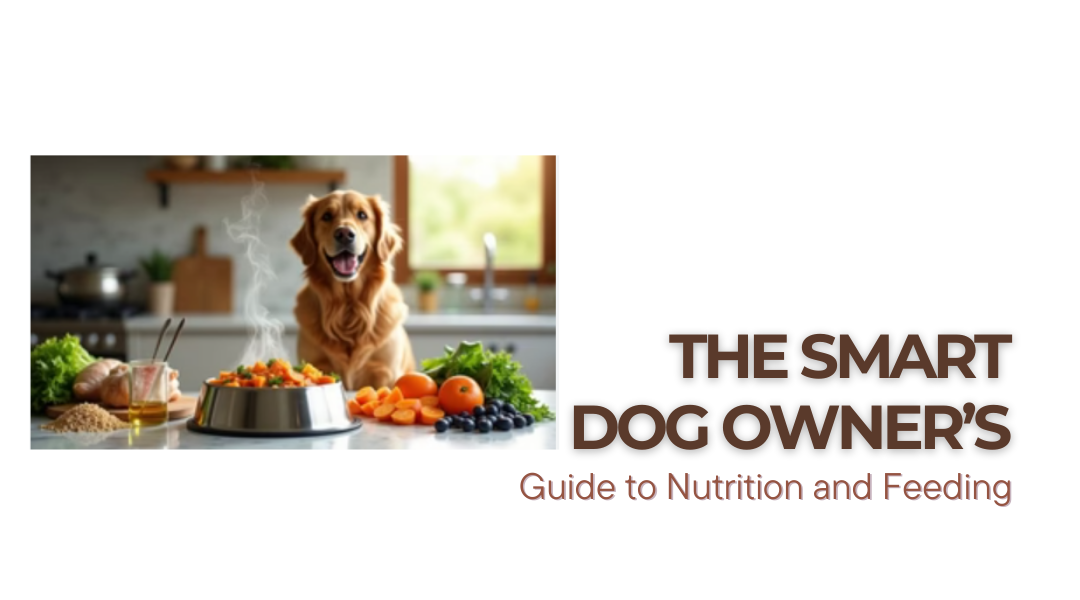Your dog would probably eat a sock if you let them. But as their personal chef (and life coach), it’s your job to make sure they’re getting the good stuff. The right diet keeps their tail wagging, their coat shiny, and their energy levels in check. Here’s how to feed them like a pro.
The Good Stuff: What Your Dog Should Be Eating
1. Fresh, Whole Foods (Yes, Dogs Can Eat These!)
- Apples – A crunchy, low-calorie snack packed with fiber. Just ditch the core and seeds.
- Plain Chicken – The ultimate bland diet hero for upset stomachs. Boil it, shred it, and mix it with rice.
- Pumpkin Puree – Not the pie filling! A spoonful of plain canned pumpkin works wonders for digestion.
- Blueberries – Tiny antioxidant bombs that most dogs go nuts for.
- Peanut Butter – The holy grail of treat-dispensing toys. Just make sure it’s unsalted and xylitol-free.
2. The Best Commercial Foods
- Dry Kibble – Convenient, good for teeth, and less messy. Look for high-protein, meat-first formulas (chicken, beef, or fish as the #1 ingredient).
- Wet Food – Great for picky eaters or seniors with dental issues. Mix it with kibble for extra flavor.
- Freeze-Dried Raw – A middle ground between kibble and raw diets—just add water.
Pro Tip: Rotate proteins (chicken, beef, fish) to prevent allergies and boredom.
The No-Go List: Foods That Can Land You at the Vet
Some human foods are straight-up toxic for dogs. Avoid these like your dog avoids bath time:
- Chocolate (the darker, the deadlier)
- Grapes & Raisins (kidney failure risk)
- Onions & Garlic (bad for red blood cells)
- Xylitol (found in sugar-free gum—instantly dangerous)
- Cooked Bones (splinter hazard)
Feeding 101: How Much, How Often?
Portion Control (Because Dog Obesity is Real)
- Puppies – 3-4 small meals a day (they’re growing fast).
- Adults – 2 meals (morning & evening) to avoid bloat, especially in deep-chested breeds.
- Seniors – Light, easy-to-digest meals with joint support.
Rule of Thumb: You should be able to feel their ribs but not see them. If they’re shaped like a sausage, cut back.
Treats: The Sneaky Diet Wreckers
Treats should be <10% of their daily calories. Swap processed biscuits for:
- Carrot sticks (crunchy and low-cal)
- Frozen green beans (perfect for teething pups)
- Dehydrated sweet potato (chewy and nutritious)
Special Diets for Special Needs
Some dogs need extra TLC when it comes to food:
- Allergies? Try limited-ingredient diets (duck, salmon, or novel proteins).
- Arthritis? Look for glucosamine-rich foods or supplements.
- Kidney Issues? Low-phosphorus, vet-prescribed diets are a must.
Transition Tip: Mix new food with old over 7-10 days to avoid stomach drama.
Hydration Station
Dogs need 1 oz of water per pound of body weight daily. If they’re not drinking enough:
- Try a pet fountain (many dogs prefer running water).
- Add bone broth (no onions!) to their kibble.
- Feed wet food for extra moisture.
Final Word: Work With Your Vet
There’s no one-size-fits-all diet. Your vet can help tailor a plan based on:
- Breed (a Chihuahua ≠ a Great Dane)
- Activity Level (couch potato vs. agility champ)
- Health History (allergies, sensitivities, etc.)
Bottom Line: Good nutrition = fewer vet bills and more years of fetch.
